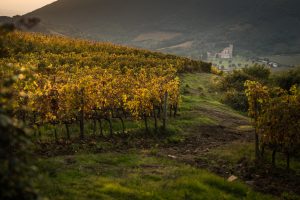
“The candidature of the Valpolicella grape drying technique as a Unesco Intangible Heritage is officially launched from Verona, from “Vinitaly 2022”. This is a great opportunity for the development of the Denomination and the territory, a driving force for local economies and for the enhancement of the traditional, unmistakable and inimitable processing technique. In all these years a winemaking technique has never been recognized, so it is a challenge, but this dossier represents what UNESCO requires”. This is how Luca Zaia, President of the Veneto Region, spoke at the presentation of the Unesco candidacy of “The technique of drying the grapes of Valpolicella”, which officially starts today at “Vinitaly 2022” in Verona.
Together with the Governor Zaia were present the vice president of the UNESCO World Experts Organ, Professor Pier Luigi Petrillo, the rector of the University of Verona, Professor Pier Francesco Nocini, the presidents of the Consorzio Vini Valpolicella Christian Marchesini (who had announced it a few days ago) and of the Strada del Vino Valpolicella Miriam Magnani. “With Professor Petrillo I shared a large part of my history as Minister - said Zaia - I define him as “an enfant prodige” of measures in agriculture that made me fall in love with the Unesco game - continued the Governor - from the dossier on Prosecco, to that of Passito di Pantelleria and pizza. In a year’s time I plan to return to “Vinitaly” to celebrate the tenth Unesco site in Veneto. I already said at “Vinitaly 2019” that we had another big surprise, the candidacy of the method of drying: a thousand-year tradition that is identity, is the know-how, is the cultural heritage of a community - concluded the President of the Veneto Region, Luca Zaia - for Verona we intend to apply also the Pesciara of Bolca, with its priceless heritage of marine fossils. Many opportunities that must be seized and that demonstrate the ability of Veneto to look to the future”.
The uniqueness of the most prestigious wines of Valpolicella comes from the traditional technique of “drying”: the best grapes, selected and harvested by hand mainly by women, are laid to rest on the traditional “Arele” (racks used for the breeding of silkworms) or in modern crates, inside the so-called “fruttai”. This period lasts about three months and in this phase, of fundamental importance, the grapes lose between 30% and 50% of their weight, concentrating the aromas and all those elements which make the great red wines of the territory recognizable and inimitable.
Copyright © 2000/2025
Contatti: info@winenews.it
Seguici anche su Twitter: @WineNewsIt
Seguici anche su Facebook: @winenewsit
Questo articolo è tratto dall'archivio di WineNews - Tutti i diritti riservati - Copyright © 2000/2025